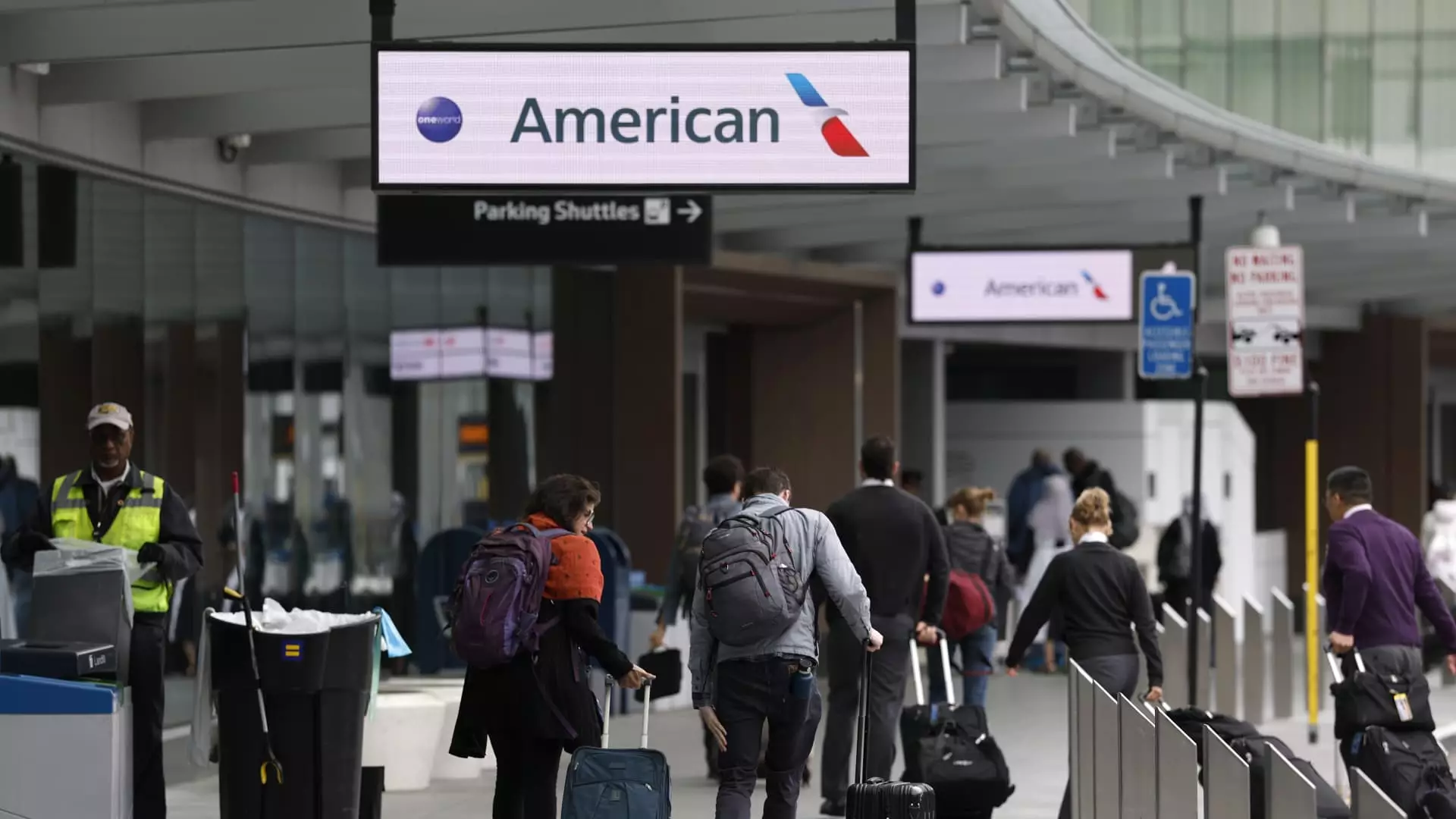As we navigate through 2025, the optimism surrounding domestic air travel appears to be dissipating, eclipsed by significant economic headwinds. Airline executives have recently dialed down their earlier forecasts and are now openly discussing an unsettling reality: passenger demand for domestic flights is not living up to what they had anticipated. This revelation comes amidst a backdrop of erratic tariff policies, stock market volatility, and, most importantly, a lingering sense of economic uncertainty.
American Airlines’ CEO, Robert Isom, poignantly encapsulated this growing concern, remarking that, when considering their discretionary spending, “nobody really relishes uncertainty” in the context of planning vacations with hard-earned money. This statement is emblematic of a broader sentiment echoed by various leaders in the airline industry, who find themselves grappling with an unpredictable economic landscape.
The Consequences of Economic Uncertainty
Uncertainty can bring about a chilling effect on consumer behavior, particularly for significant purchases such as travel. Recent earnings calls from major players in the airline industry, including Delta, Southwest, and United Airlines, articulate a clear trend: the pivot from expansive capacity growth to a more cautious approach is in full swing. Companies have scrapped their optimistic projections for 2025, reflecting an emerging consensus that predicting the health of the U.S. economy has become a perilous endeavor.
The impact is palpable. A surprising 5.3% drop in airfares from the previous year underscores a market struggling to adjust to reduced consumer confidence. This is not merely a seasonal fluctuation; the decline signifies a pressing need for the airlines to realign their pricing strategy amid an excess of available seats.
The Role of Corporate Travel
Corporate travel, a traditionally stalwart segment for airline revenues, is also faltering. With businesses facing their own sets of uncertainties, including potential budget cuts and shifting market conditions, the willingness to shell out for last-minute flights is diminishing. Conor Cunningham, an analyst at Melius Research, aptly noted that “the first thing that goes away is corporate travel” whenever uncertainty rears its head.
Although Delta’s CEO Ed Bastian initially reported a promising 10% year-over-year growth in corporate travel, the reality has quickly turned as momentum has flattened. For airlines, reducing reliance on this segment can pose a significant challenge. Business travelers are integral to revenue stability because they are generally less price-sensitive and more likely to book at premium rates. The disappearance of this reliable revenue stream compels airlines to endlessly negotiate price cuts to entice leisure travelers, further exacerbating their financial struggles.
The Impact of Corporate Cuts
The Trump administration’s cost-cutting measures have reverberated throughout the airline industry, evidenced by a substantial drop in government travel budgets. Companies have had to contend with lightened demand from not just households but also from governmental bodies that are becoming increasingly wary about spending. Meanwhile, Alaska Airlines has issued caution regarding its second-quarter earnings, already anticipating reduced revenue due to softening demand.
Despite these challenges, there are glimmers of hope. Some segments, particularly in international travel, remain robust, with U.S.-based travelers continuing a passionate affair with overseas destinations. Executives assert that while domestic demand has faltered, foreign travel maintains a certain tenacity.
The Path Forward
Industry leaders are optimistic that the restoration of certainty could catalyze a swift recovery, as articulated by Isom. Yet, this optimism is precarious. Airlines are effectively firing blanks as they grapple with the fractured realities of supply and demand within the domestic market. The consumer psyche is fickle, and patience will wear thin in the face of sustained uncertainty.
As airline CEOs recalibrate expectations and adjust pricing strategies, the question remains: will resilience outlast the looming specter of recession? The answer lies in how well the industry can adapt not merely by accommodating current economic realities but by anticipating the very challenges that have precipitated this unease.
The airline industry is at a crossroads, navigating through foggy skies of uncertainty. The stakes are high—for them, for consumers, and for the economy at large.



Leave a Reply